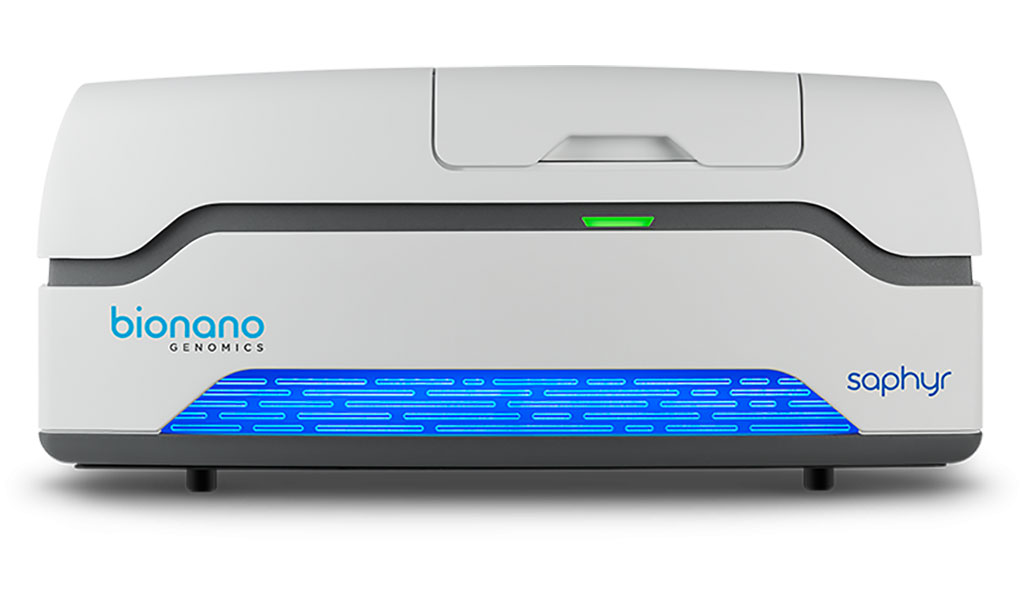Optical Genome Mapping Enables Constitutional Chromosomal Aberration Detection
By LabMedica International staff writers
Posted on 20 Jul 2021
Optical genome mapping (OGM) is a novel method that fills this void by being able to detect all classes of structural variations (SVs), including copy number variations (CNVs). OGM is being adopted by laboratories as a tool for both postnatal constitutional genetic disorders and hematological malignancies.Posted on 20 Jul 2021
A predisposition to tumor development is associated with some constitutional chromosomal abnormalities. Constitutional chromosome rearrangements are inherited from a carrier parent or occur de novo in the gametes and are present in all tissues. Acquired chromosome rearrangements occur during life and are limited to a specific tissue.

Image: The Bionano Genomics Saphyr instrument used for Optical Genome Mapping (Photo courtesy of Bionano Genomics)
An international team of medical geneticists led by the Radboud University Medical Center (Nijmegen, the Netherlands) investigated the ability of optical genome mapping (OGM) to detect known constitutional chromosomal aberrations. Ultra-high-molecular-weight DNA was isolated from 85 blood or cultured cells and processed via OGM. A de novo genome assembly was performed followed by structural variant and CNV calling and annotation, and results were compared to known aberrations from standard-of-care tests such as karyotype, fluorescence in situ hybridization (FISH), and/or copy number variants (CNV) microarray). The team isolated ultra-high molecular weight DNA from the samples and preparing the samples for OGM with the Bionano Genomics Saphyr instruments (San Diego, CA, USA).
The scientists analyzed 99 chromosomal aberrations, including seven aneuploidies, 19 deletions, 20 duplications, 34 translocations, six inversions, two insertions, six isochromosomes, one ring chromosome, and four complex rearrangements. Several of these variants encompass complex regions of the human genome involved in repeat-mediated microdeletion/microduplication syndromes. High-resolution OGM reached 100% concordance compared to standard assays for all aberrations with non-centromeric breakpoints. This proof-of-principle study demonstrates the ability of OGM to detect nearly all types of chromosomal aberrations.
In a related paper, members of the same team assessed OGM in the hematological malignancy setting, retrospectively using the optical mapping with the Saphyr genome imaging system to search for informative chromosomal changes in 52 hematological malignancy samples from cases diagnosed in the past.
The authors concluded that their results highlight the potential for OGM to provide a cost-effective and easy-to-use alternative that would allow comprehensive detection of chromosomal aberrations and structural variants, which could give rise to an era of “next-generation cytogenetics. The study was published on July 7, 2021 in the American Journal of Human Genetics.
Related Links:
Radboud University Medical Center
Bionano Genomics













